Get a free quote
If you have questions about our services, plans, or pricing we are here for you. Fill out the form below and we will communicate with you by email (and of course provide you with a free estimate).
FEBRUARY 01 2022 /
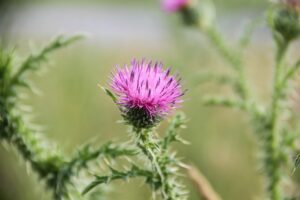 This prickly weed is infamous for being painful when accidentally stepped on. Its long leaves have sharp barbs that can irritate your skin. Canada thistle prefers to be in moist soil and grows into a tall plant that flowers in the summer. Adding gravel or sand to your lawn’s soil, along with routine aeration can help dry up the area.
This prickly weed is infamous for being painful when accidentally stepped on. Its long leaves have sharp barbs that can irritate your skin. Canada thistle prefers to be in moist soil and grows into a tall plant that flowers in the summer. Adding gravel or sand to your lawn’s soil, along with routine aeration can help dry up the area.
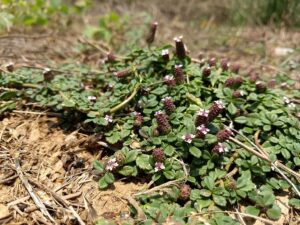 Carpetweed forms as a low-lying mat close to the ground and can spread up to two or three feet. To avoid growth, keep your soil well-watered, as it prefers dry and drought-like soil conditions.
Carpetweed forms as a low-lying mat close to the ground and can spread up to two or three feet. To avoid growth, keep your soil well-watered, as it prefers dry and drought-like soil conditions.
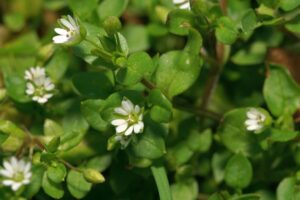 Chickweed is a low spreading weed that thrives in cool and wet weather. If your lawn has too much nitrogen and the soil is compact, you’re almost guaranteed to find this cool-season grass weed. Mowing your lawn too short is also a common cause.
Chickweed is a low spreading weed that thrives in cool and wet weather. If your lawn has too much nitrogen and the soil is compact, you’re almost guaranteed to find this cool-season grass weed. Mowing your lawn too short is also a common cause.
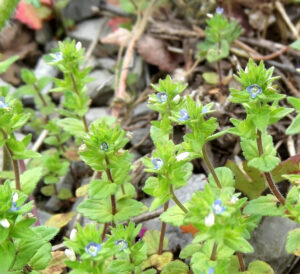 Speedwell is a low-growing plant that produces small purple flowers in the spring. This weed will pop up in your yard if your lawn is poorly fertilized, has thinning turf, or compact soil.
Speedwell is a low-growing plant that produces small purple flowers in the spring. This weed will pop up in your yard if your lawn is poorly fertilized, has thinning turf, or compact soil.
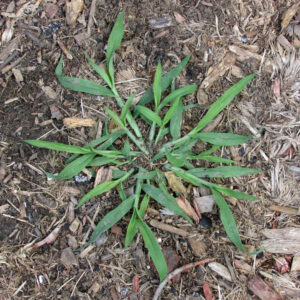 One of the most popular cool-season grass weeds, crabgrass is very common in turfgrass. It generally grows in drought-like soil conditions, so add mulch or peat to your soil for better moisture retention.
One of the most popular cool-season grass weeds, crabgrass is very common in turfgrass. It generally grows in drought-like soil conditions, so add mulch or peat to your soil for better moisture retention.
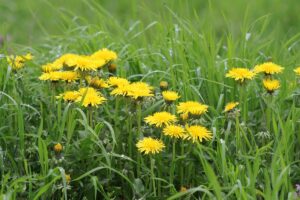 As the most common weed on this list, it’s also the most versatile. Dandelions can grow almost anywhere and will tolerate poor soil as long as there’s at least some sun to grow.
As the most common weed on this list, it’s also the most versatile. Dandelions can grow almost anywhere and will tolerate poor soil as long as there’s at least some sun to grow.
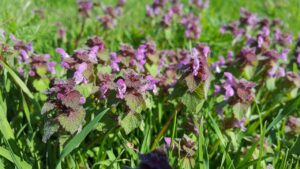 This dark green plant has purple orchid-like flowers come springtime. It will happily take over your lawn if you’re mowing it too short or not properly fertilizing.
This dark green plant has purple orchid-like flowers come springtime. It will happily take over your lawn if you’re mowing it too short or not properly fertilizing.
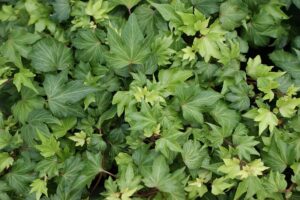 While ivy looks pretty, it’s very invasive and can sometimes cause structural damage. It not only loves the shade but it also thrives in sections of thinned out turf, so keeping a dense lawn is crucial to avoid it!
While ivy looks pretty, it’s very invasive and can sometimes cause structural damage. It not only loves the shade but it also thrives in sections of thinned out turf, so keeping a dense lawn is crucial to avoid it!
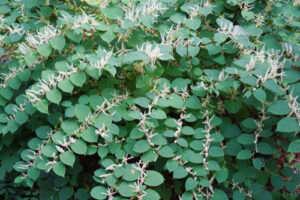 Japanese knotweed can trick you. It looks like a lush bush, but its roots spread quickly and are extremely difficult to remove if left in the ground too long. Knotweed thrives in droughty and compacted soil.
Japanese knotweed can trick you. It looks like a lush bush, but its roots spread quickly and are extremely difficult to remove if left in the ground too long. Knotweed thrives in droughty and compacted soil.
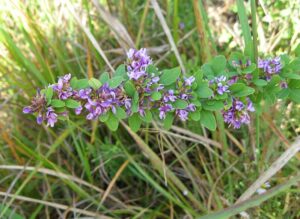 Another common mat-forming weed, this type easily chokes out thin turf. Keep your grass at a longer length than normal and monitor the soil’s pH levels to avoid lespedeza from taking over.
Another common mat-forming weed, this type easily chokes out thin turf. Keep your grass at a longer length than normal and monitor the soil’s pH levels to avoid lespedeza from taking over.
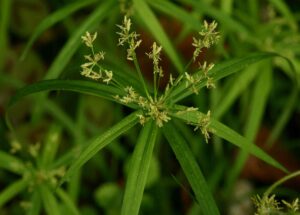 Sedge plants do surprisingly well with poor drainage and thrive in wet soil. However, they can easily grow in almost any environment.
Sedge plants do surprisingly well with poor drainage and thrive in wet soil. However, they can easily grow in almost any environment.
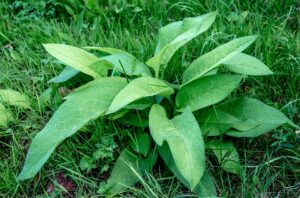 If your lawn isn’t getting enough nitrogen fertilizer or the soil has been compacted, you’ll probably find some plantain weeds mixed in with your grass.
If your lawn isn’t getting enough nitrogen fertilizer or the soil has been compacted, you’ll probably find some plantain weeds mixed in with your grass.
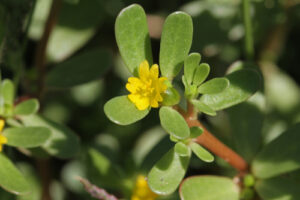 The purslane plant is a type of succulent, and it’s known to grow quickly in dry, sandy soil. Prevent these cool-season grass weeds by creating rich, moisture-retaining soil for your lawn by adding organic matter like mulch or manure.
The purslane plant is a type of succulent, and it’s known to grow quickly in dry, sandy soil. Prevent these cool-season grass weeds by creating rich, moisture-retaining soil for your lawn by adding organic matter like mulch or manure.
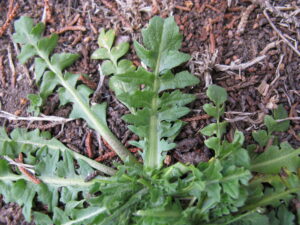 If you’re finding these in your yard, your soil is probably a little too dry and sandy. Shepherd’s purse looks similar to thistles, but without the painful barbs.
If you’re finding these in your yard, your soil is probably a little too dry and sandy. Shepherd’s purse looks similar to thistles, but without the painful barbs.
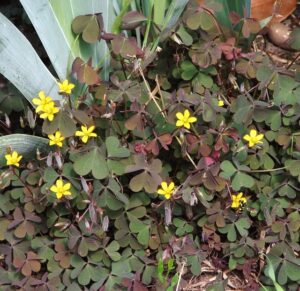 Sorrel plants thrive in some of the worst soil conditions possible. They can grow in acidic, droughty, and infertile soil conditions.
Sorrel plants thrive in some of the worst soil conditions possible. They can grow in acidic, droughty, and infertile soil conditions.
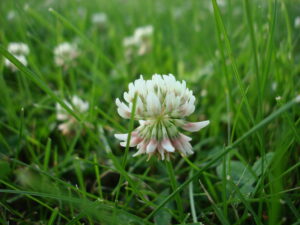 Clover easily grows when there’s not enough nitrogen, or the soil contains a high amount of clay. They also love moist conditions, but keeping your lawn well-fed can keep them at bay.
Clover easily grows when there’s not enough nitrogen, or the soil contains a high amount of clay. They also love moist conditions, but keeping your lawn well-fed can keep them at bay.
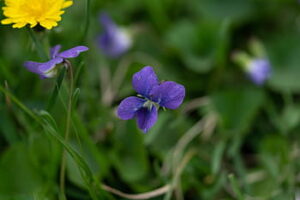 Some homeowners see wild violets as a weed, while others enjoy it as a wildflower. These flowers like moist soil, but can crowd your lawn if it’s thinning.
Some homeowners see wild violets as a weed, while others enjoy it as a wildflower. These flowers like moist soil, but can crowd your lawn if it’s thinning.
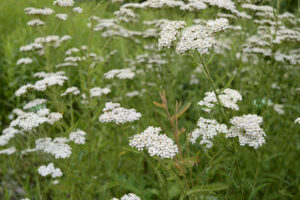 Yarrow is a flowering plant that thrives in droughty and infertile soil. Unfortunately, yarrow can be difficult to remove because it’s so adaptable.
Yarrow is a flowering plant that thrives in droughty and infertile soil. Unfortunately, yarrow can be difficult to remove because it’s so adaptable.
